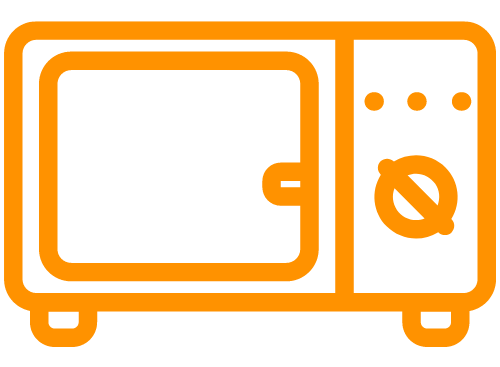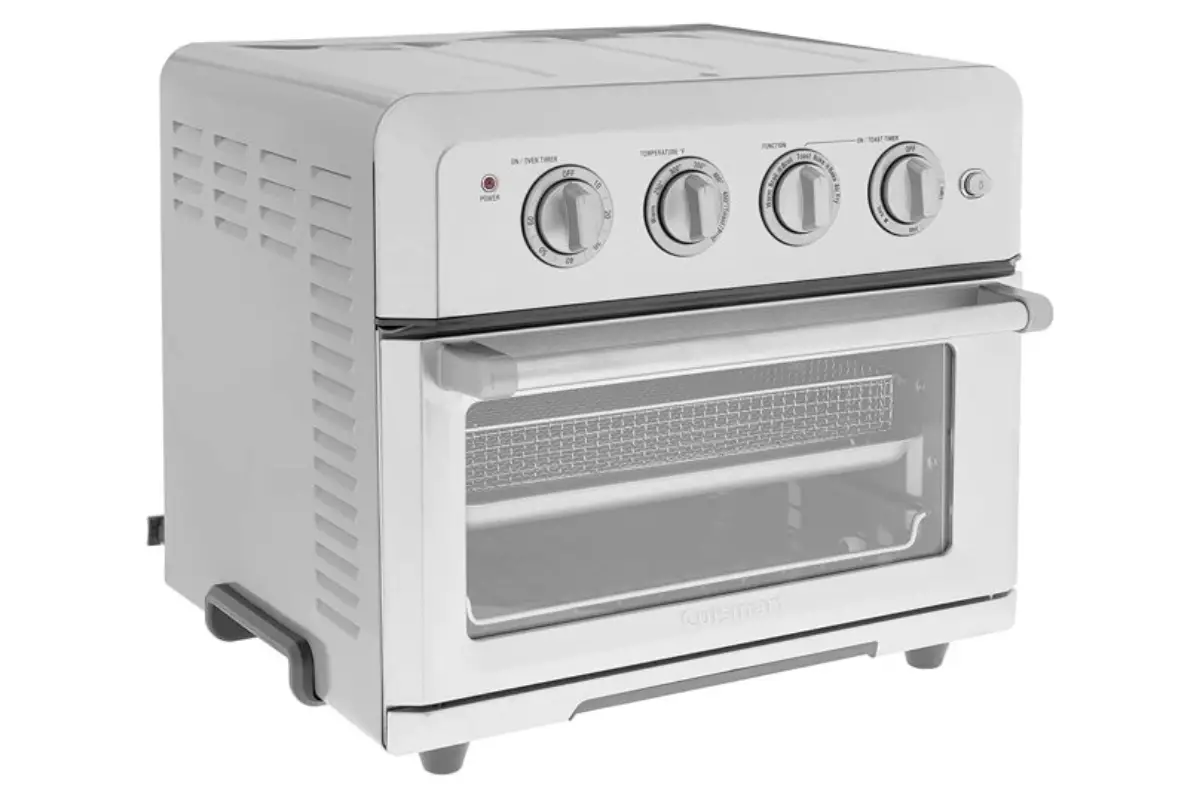If you’ve recently purchased a convection oven or are considering adding one to your kitchen appliances, it’s essential to understand how to use it properly. Unlike a traditional oven, a convection oven uses a fan to circulate hot air, cooking your food faster and more evenly. This means you can enjoy delicious and evenly cooked dishes without having to rotate or flip them halfway through the cooking process. In this article, we will guide you through everything you need to know about using a convection oven, from basic settings to advanced techniques.
Whether you’re a seasoned home chef or new to the world of cooking, understanding how to use a convection oven can help take your culinary skills to the next level. So, let’s get started!
Table of Contents
ToggleWhat is a Convection Oven?
A kind of oven known as a convection oven is one that makes use of a fan to move hot air around the food while it is being cooked. This method of cooking is faster and more efficient than traditional ovens because it distributes heat evenly, resulting in faster cooking times and more evenly cooked food.
In a convection oven, the fan is located in the back of the oven and blows hot air over and around the food. This creates a more even distribution of heat and helps to cook food more quickly and evenly. The hot air also helps to seal in moisture, resulting in juicier and more flavorful dishes.
A convection oven is a great investment for anyone who enjoys cooking and wants to achieve professional-level results at home. With its even heat distribution, faster cooking times, and ability to create perfectly crispy dishes, a convection oven is a must-have for any kitchen.
What Does a Convection Oven Do?
When either the convection bake setting or the convection roast setting is selected on the oven’s control panel, the fan kicks on and circulates the air inside the oven. So what exactly is the big deal here? The benefit of using this function is that it maintains a lot more consistent temperature in the air around whatever it is that you are cooking. Why is it a significant point? Imagine you put a turkey that weighs 20 pounds in the oven. Even if you let it warm up for an hour before putting it in to roast, the internal temperature of that bird is only going to reach a maximum of 60 degrees Fahrenheit.
When you place the turkey in a standard oven that has been preheated to between 325 and 350 degrees Fahrenheit, the temperature of the air surrounding the turkey will be lower than the temperature that you have set the oven to since the turkey itself will be chilling the air in the oven. Because the fan of a convection oven directs cold air away from the turkey while it’s cooking, the bird is ready to eat much more quickly. We consulted a scientist about this, and he confirmed that everything is connected to the basic rule of thermodynamics.
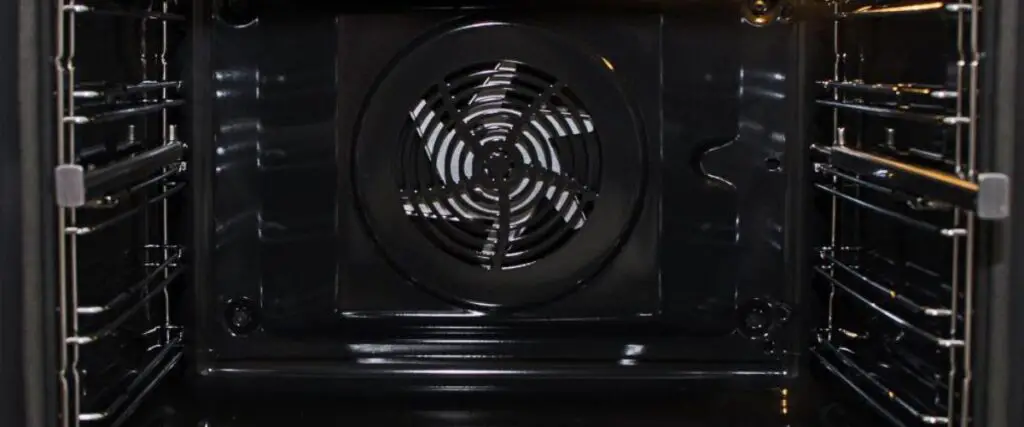
How To Use a Convection Oven?
If you’re looking to upgrade your cooking skills, then learning how to use a convection oven is a must. A convection oven is a versatile appliance that can help you cook food more efficiently and evenly and with less time and energy.
Here are some steps to follow to help you how to use a convection oven properly:
Read the Manual:
The first step is to read the user manual that came with your convection oven. This will help you understand the specific features and functions of your appliance.
Preheat the Oven:
Preheating your oven is essential for ensuring that your food cooks evenly. Set your convection oven to the desired temperature and allow it to preheat for at least 10 minutes.
Adjust the Cooking Time and Temperature:
Convection ovens cook food faster and at lower temperatures than conventional ovens. Therefore, it’s essential to adjust the cooking time and temperature accordingly. As a rule of thumb, reduce the temperature by 25 degrees Fahrenheit and decrease the cooking time by about 25% compared to conventional oven recipes.
Use the Right Cookware:
Use cookware that is appropriate for convection cooking. Avoid using glassware, as it can shatter due to rapid temperature changes. Instead, use oven-safe metal or ceramic cookware.
Use the Convection Setting:
Turn on the convection setting on your oven to ensure that the hot air circulates around the food. This will help the food cook evenly and reduce the cooking time.
Monitor the Cooking Process:
Keep an eye on your food while it’s cooking to ensure that it doesn’t burn or overcook. Use a meat thermometer to check the internal temperature of meat dishes to ensure they are cooked to the appropriate level.
By following these simple steps, you understand how to use a convection oven you can use a convection oven like a pro and take your cooking to the next level. With a little practice, you’ll be able to cook a variety of dishes with ease and confidence.
More Tips for Convection Oven Adjustments
If you’re using a convection oven for the first time, it can be a bit daunting to figure out the right adjustments to make for your recipes. On the other hand, with some hints and suggestions, you can master the art of cooking in a convection oven and create delicious meals every time. We’ll share more tips for convection oven adjustments to help you get the most out of your appliance.
Reduce the cooking time
When utilizing a convection oven, you should shorten the amount of time that each recipe calls for to be cooked. Traditional ovens take longer to finish the cooking process than their convection counterparts, so reducing the cooking time will help prevent your food from overcooking or drying out.
Lower the temperature
Because convection ovens cook food faster, you’ll also want to lower the temperature for your recipes. Reducing the temperature by 25 degrees Fahrenheit is a good rule, but you may need to adjust this depending on your recipe.
Use shallow pans
When cooking in a convection oven, it’s best to use shallow pans. This allows the hot air to circulate around the food more evenly, resulting in more even cooking.
Rotate the pans
It is important to rotate the pans halfway during the cooking period in order to guarantee that the food cooks uniformly throughout. This will help prevent any hot spots in the oven from causing your food to cook unevenly.
Keep an eye on your food
Convection ovens cook food quickly, so it’s important to keep an eye on your food to prevent it from overcooking or burning. Use a timer and check your food frequently to ensure that it’s cooking properly.
By reducing the cooking time, lowering the temperature, using shallow pans, rotating the pans, and keeping an eye on your food, you can make the necessary adjustments for cooking in a convection oven. By adhering to these guidelines, you will always be able to prepare delectable foods that are cooked uniformly throughout the whole surface.
What Can You Cook In a Convection Oven?
Are you tired of using a conventional oven that takes forever to cook your meals? Maybe it’s time to switch to a convection oven! A fan is used in convection ovens to circulate hot air around the food being cooked, which allows it to cook faster and more evenly. But what can you cook in a convection oven?
Roast Meat:
Convection ovens are perfect for roasting meats. The hot air circulates around the meat, cooking it evenly and quickly. You can roast chicken, beef, pork, lamb, and even fish in a convection oven.
Baked Goods:
Convection ovens are also great for baking. The hot air circulates around the baked goods, giving them a nice, even bake. You can bake bread, cakes, cookies, and pastries in a convection oven.
Vegetables:
Convection ovens are ideal for roasting vegetables. The hot air helps to caramelize the vegetables, giving them a delicious flavour. You can roast any vegetable you like, from potatoes and carrots to broccoli and asparagus.
Pizza:
If you love pizza, you’ll love cooking it in a convection oven. The hot air circulates around the pizza, cooking it evenly and giving the crust a crispy texture.
Casseroles:
Casseroles are perfect for cooking in a convection oven. The hot air circulates around the casserole, cooking it evenly and quickly. You can cook any type of casserole in a convection oven, from lasagna to shepherd’s pie.
A convection oven is a flexible piece of kitchen equipment that may be used to prepare a broad range of foods in the kitchen. From roast meats to baked goods, vegetables, pizza, and casseroles, a convection oven can do it all. So, if you’re looking to speed up your cooking time and enjoy delicious, evenly cooked meals, a convection oven is definitely worth considering.
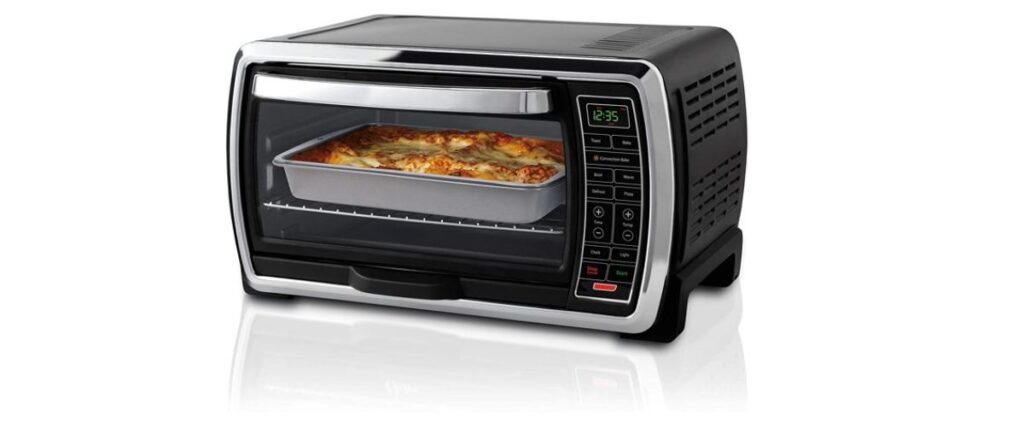
When Should You Use the Convection Setting?
When using a convection oven, you may wonder when it’s best to use the convection setting versus the standard setting. The convection setting uses a fan to circulate hot air around the food, which can result in faster and more even cooking. However, not all recipes or foods are well-suited for convection cooking.
So when should you use the convection setting? Here are a few guidelines to follow:
When you want to cook food quickly:
The convection setting can be great for reducing cooking time. The hot air circulating around the food can cook it up to 25% faster than a standard oven. This can be especially useful when you’re in a hurry or cooking for a large group.
When you want even cooking:
Convection cooking may provide more evenly cooked food because the hot air is distributed evenly around the meal. This can be particularly helpful when you’re cooking delicate items, such as pastries or cookies, that can easily burn or cook unevenly.
When you want crispy, browned food:
The convection setting can also help create a crispy, browned exterior on food. This is because the circulating hot air can remove moisture from the surface of the food, allowing it to brown more quickly.
When you’re cooking multiple dishes at once:
If you’re cooking multiple dishes at once, using the convection setting can be helpful. Because the hot air circulates around the food, you can cook multiple dishes at the same time without having to worry as much about hot spots or uneven cooking.
However, there are some cases where you may not want to use the convection setting. For example, if you’re cooking something that is covered, such as a casserole or roast, the convection setting may dry out the top layer of the food. Similarly, some recipes may specify that you should not use the convection setting.
When Should You NOT Use the Convection Setting?
- When it comes to cooking, the convection setting can be a useful tool for achieving perfect results. However, there are times when using the convection setting is not the best option. We will explore when you should avoid using the convection setting and opt for other methods.
- Baking delicate desserts If you’re making a light dessert like soufflés, custards, or angel food cake, it’s best to avoid using the convection setting. The constant circulation of hot air can cause these desserts to collapse or become too dry.
- Cooking dishes that need to be crispy While the convection setting is great for roasting meats and vegetables, it’s not ideal for cooking dishes that need to be crispy, like fried chicken or french fries. The constant air movement can cause the breading or coating to become soggy.
- Using certain types of bakeware When using the convection setting, it’s important to use the right type of bakeware. Metal pans and baking sheets are ideal for convection cooking because they conduct heat well and allow for proper air circulation.
- Cooking dishes with a lot of liquid If you’re cooking a dish with a lot of liquid, like soup or stew, it’s best to avoid using the convection setting. The constant air movement can cause the liquid to evaporate too quickly, resulting in a thicker and more concentrated dish than you intended.
While the convection setting can be a valuable tool in the kitchen, there are times when it’s best to avoid using it. By following these guidelines, you can ensure that your dishes come out perfectly every time.
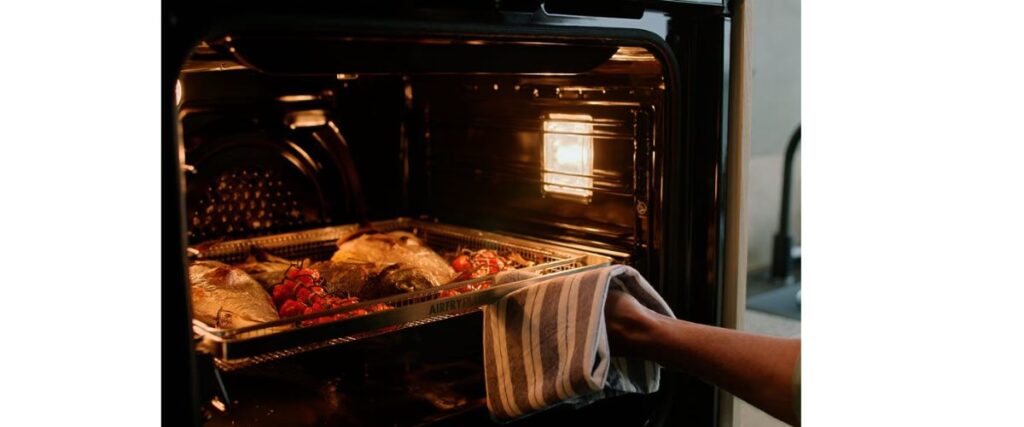
Pros and Cons Of Convection Ovens
Both amateur cooks and professionals in restaurants are increasingly using convection ovens. These ovens use a fan to circulate hot air around the food, resulting in faster and more even cooking. However, like any cooking appliance, there are both advantages and disadvantages to using a convection oven. We shall examine the benefits and drawbacks of convection ovens to help you decide whether this type of oven is right for your cooking needs.
Pros of Convection Ovens:
Faster Cooking:
Traditional ovens take longer to cook food than convection ovens. The hot air circulation reduces the cooking time, which is particularly useful when you have a tight schedule.
Even Cooking:
The fan in a convection oven ensures that the heat is distributed evenly around the food. This results in evenly cooked dishes that are moist and tender on the inside while crispy and browned on the outside.
Versatile:
Convection ovens can be used to cook a wide variety of dishes, from roasts and casseroles to cakes and cookies. They are particularly useful for baking, as the even heat distribution ensures that baked goods rise evenly.
Energy Efficient:
Because convection ovens cook food faster than traditional ovens, they use less energy. This can result in lower energy bills over time.
Cons of Convection Ovens:
Price:
Most of the time, a convection oven will cost more than a regular oven. If you are on a tight budget, a convection oven may not be the best option.
Learning Curve:
Cooking with a convection oven requires some adjustment, as the cooking times and temperatures may be different than what you are used to. You may need to experiment with your recipes to find the right settings.
Noisy:
Convection ovens tend to be louder than traditional ovens due to the fan. This may not be a problem for some people, but it can be distracting if you are working in the kitchen while the oven is on.
Drying Effect:
The hot air circulation in a convection oven can cause some foods to dry out faster than in a traditional oven. This is particularly true for dishes that are already dry, like roasted meats.
How to Clean Burnt Sugar from Oven: Learn 11 Easy Methods
How much quicker does food cook in a Convection Oven?
If you’re curious about how much faster your food will cook in a convection oven compared to a traditional oven, you’ve come to the right place. Convection ovens are becoming increasingly popular in modern kitchens thanks to their ability to cook food faster and more evenly.
The answer to how much quicker food cooks in a convection oven depends on the type of food you’re cooking and the recipe you’re using. However, as a general rule, convection ovens can cook food up to 25% faster than traditional ovens. This is because they have a fan that circulates the hot air, allowing the heat to be evenly distributed throughout the oven.
For example, if a recipe calls for a 30-minute cooking time in a traditional oven, you could reduce the cooking time to around 22-23 minutes in a convection oven. This can be particularly useful if you’re in a hurry and need to get dinner on the table quickly.
It’s worth noting that not all recipes are suitable for convection cooking. Some recipes, particularly those that require a lot of moisture, may not work as well in a convection oven. It’s always a good idea to check your recipe and consult your oven’s manual before making any adjustments to the cooking time or temperature.
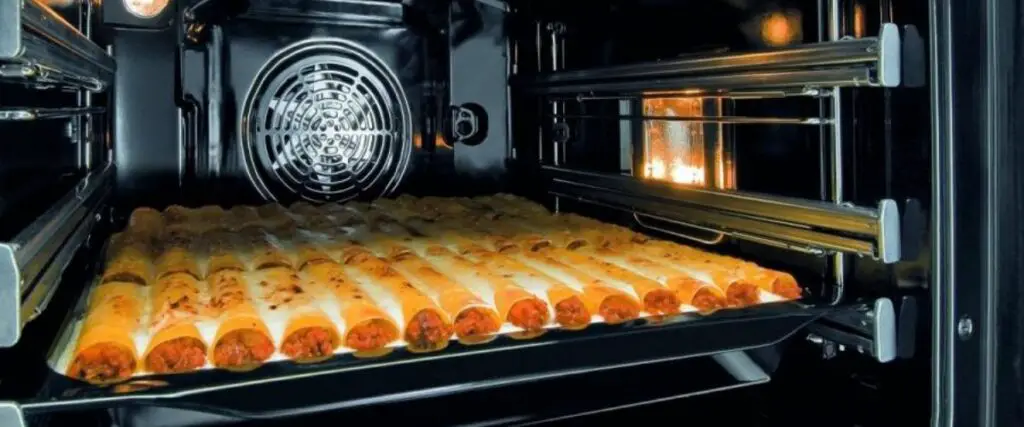
Conclusion
In conclusion, a convection oven can be a fantastic addition to your kitchen, offering faster, more even cooking and a variety of cooking options. By understanding what a convection oven is and how to use a convection oven, you can make the most of this powerful kitchen tool. Whether you are a beginner or an experienced cook, using a convection oven can be easy with the right knowledge and adjustments.
From roasting meats to baking cookies, a convection oven can handle a wide range of dishes, making it a versatile appliance for any home cook. But you should think about the pros and cons of a convection oven before making a purchase, as it may not be the right choice for every cooking situation. Overall, a convection oven can be an excellent choice for those who want to save time and enjoy delicious, evenly cooked meals.
Discover the ultimate oven solutions and revolutionize your cooking experience with OvenWave – Explore Now!
